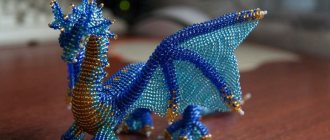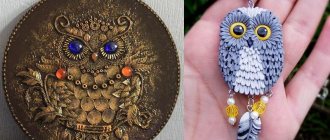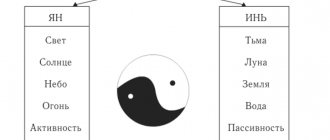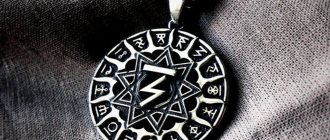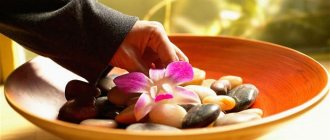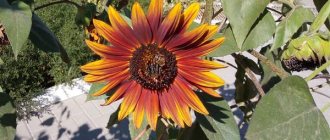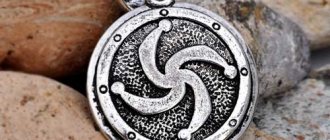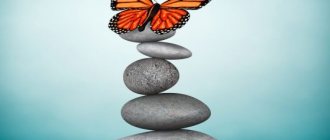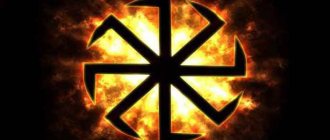According to Feng Shui, the lion is a protector from all kinds of threats from the external environment. The figurine allows you to bring prosperity and stability to your home, as well as maintain peace. Among other things, the lion figurine will help fight the anger and envy of ill-wishers, putting up an invisible barrier to negative energy that is directed against the inhabitants of the home.
This symbol is a figurine of a lion, which can be depicted in various poses. The lion figurine brings the main magical effect to the energy of the owner of the house. Leo activates the functions of a protector, allowing the owner to recharge himself with the energy of fearlessness and greatness.
Types of figurines:
Lion on a pedestal. Often the lion himself is depicted on a towering pedestal, which symbolizes his superiority over everyone.- A lion with an open mouth. A mouth gaping in a menacing roar with huge fangs, according to Feng Shui, symbolizes a call to submission, thereby prioritizing social castes.
Crouching lion. This pose symbolizes the dominant hunting instinct in the lion. Powerful paws and confident movements leave no doubt that the prey will be struck by a predator.- Leo in a jump. Often the figure of a lion can be depicted in a jump, a second before attacking the victim. This pose reflects the concentration, power and pressure of the moment of the jump of the recognized king of animals.
In general, the feline grace and confidence that lives in this animal is expressed in any pose of this animal, therefore lions are depicted in both a lying and standing position, as well as in movement, without losing the sense of their own power and dignity.
Leo (lioness)
The lion is a very popular and therefore multi-valued symbol; it is popular not only in alchemy, but also in heraldry; in addition, the lion symbol was actively used in mythology. Its symbolism is so broad that, due to the fact that I don’t want to “cut off” the cultural context, I divided the material into three posts, the first is more devoted to that very cultural context, that is, the symbolism of the lion in various traditions, the second is directly to the alchemical symbolism of Leo mainly in the context of practical alchemy, and the third - to the alchemical symbolism of the lion as a figure of our psyche - spiritual alchemy. In my opinion, the second and third parts would still not be complete without the first.
The lion symbol has a dual meaning, carrying both solar and lunar symbolism, the personification of both good and evil. As a solar symbol, the lion generally represents the heat, brilliance and power of the midday Sun, the principle of fire, splendor, strength and courage, fortitude, justice, law, military power, the King of Beasts.
On the other hand, the lion symbolizes cruelty, ferocity, and an animal lifestyle. He is a symbol of war and is an attribute of the gods of war. Personifying the lunar principle, the lioness accompanies the Great Mother or is harnessed to her chariot. Symbolizing maternal instinct, the lioness is often depicted with virgin goddesses of war. So the goddesses of Crete, Mycenae, Phrygia, Thrace, Syria, Lycia and Sparta had a lioness on their coat of arms. She appears in images next to the winged Artemis, Cybele, Fortuna and the Gorgons, and in India and Tibet - as an attribute of Tara and a symbol of earth and motherhood.
The lion and lamb symbolize the new found paradise, the original unity, the “Golden Age”, as well as the end of this world and all conflicts. The solar hero who kills the lion is the Sun god, moderating the scorching heat of the midday Sun. Macrobius says that lions symbolize the Earth, “Mother of the Gods.”
In Buddhism, the lion is the protector of the law, the wisdom of the Buddha, spiritual zeal, advancement and comprehension, courage, an enlightened person, his own master. The lion cub represents a Boddhisattva who has just undergone initiation. The lion, depicted with a lion cub under its paw, also represents Buddha ruling the world and compassion. In China, a lion means courage, energy, strength. A lion with a ball is either the Sun, or the Cosmic Egg, or dualism in nature. In Taoism, the hollow “brocade ball” or “lion ball” is emptiness, the detachment of the mind. For the Japanese, the lion is the King of Beasts and appears in images with a peony, the symbol of the Queen of Flowers. The lion's ball represents emptiness.
In Hinduism, the lion symbolizes the fourth avatar of Vishnu, who is sometimes depicted as half-man and half-lion; lion Agni. The lion, depicted together with the lioness, symbolizes Shakta-Shakti, where the lion is the Supreme Lord, the rhythm, and the lioness is the power of the spoken word. The lion is the guardian of the North and an attribute of the goddesses Devi and Durga and the destroyer of demons.
In Greek mythology, the lion accompanies Phoebus, Artemis, Cybele, Tyche, the Gorgons and, at times, Dionysus. Lions are harnessed to the chariot of Cybele and Juno. Lion skin is an attribute of Hercules, a solar hero who fought a lion (acting in this case as a symbol of death) and overcame death.
In Egyptian art, the lion represents protection and guardianship; is solar when depicted with the solar disk, and lunar when adjacent to the horned Moon. A lion with two heads located at different ends of the body represents the solar gods of dawn and sunset. Two lions, located with their backs to each other and depicted together with the solar disk, mean the past and the present, yesterday and today. The lion depicted together with the solar disk means the Sun God Ra, and with the Moon - the Judge of the Dead Osiris. Tefnut has the head of a lion.
In Mithraism, the lion is a solar symbol, meaning the fourth level of initiation. Kronos, depicted with a lion's head, is Zon, time; fate that devours everything; symbol of the Sun, personifying fire. The lion and the bull symbolize death; lion and deer - the moment of death. For the Romans, the lion is solar fire, royalty; attribute of Apollo, Hercules and Fortune; the devouring power of death, but also man's victory over it.
In Sumerian-Semitic mythology, the lion is also the fire of the Sun, the highest power, strength, courage; attribute of the sun god Marduk. The goddess Inanna (Ishtar) as the Great Mother is accompanied by two lionesses. A lion with a branch in its paws or a two-headed lion personify the solar god of war Ninib. The Chaldeans depicted Nergal, the god of war and death, as a lion, personifying the hostile aspect of the Sun, the all-consuming summer heat. Additionally, the two lion heads facing away from each other represented the god of the Sun and the underworld.
For Jews, the lion is a symbol of power and cruelty. The winged lion is the sign of the South, the Lion of Judah. In Islam, the lion provides protection from evil.
In Christianity, the symbolism of the lion is ambivalent: on the one hand, it means the strength and power of Christ, his royal beginning as the King of the Jews, and on the other, the ability of Christ to save Christians from the jaws of the “roaring lion,” that is, the devil. It was believed that the lion sleeps with its eyes open, and therefore symbolizes vigilant spiritual vigilance and strength. Leo, like a sentinel, supports the foundations of the church. In addition, there was a belief that lion cubs are born dead, and life is breathed into them by the parent, therefore the lion is a symbol of resurrection. Being a solitary animal, the lion signifies the hermit and loneliness. The lion is the emblem of St. Mark, as his Gospel emphasizes the royal nature and greatness of Christ. It is also the emblem of Saints Adrian, Euphemia, Jerome, Mary of Egypt, Paul the Hermit, Prisca, Thecla. In the catacomb images, the story of Daniel in the lions' den symbolizes the Lord's salvation of his subjects. At the same time, the lion acts as the embodiment of evil forces and chaos; and in Dante it appears as a symbol of pride. The prophecy of Isaiah gives the biblical symbolism of a lion resting peacefully next to a sheep, which signifies a man in complete control of his own powers, transforming unbridled will into courage, strength and love (the Christian legend of Daniel with the lions in the den). For Jung, a lion in a wild state is a symbol of hidden passions; it can indicate the danger of being absorbed by the unconscious.
In Tarot cards, Leo usually appears on the Arcana of Strength, where it symbolizes animal instincts, or our animal soul - Nephesh. In Aleister Crowley's Tarot of Thoth, the lion was replaced by the Solar Beast - Therion, which also symbolizes the active male, and at the same time, unreasonable animal part of man, and the Girl-Soul no longer adorns him, but guides and uses this power.
In heraldry and alchemy, the lion and unicorn symbolize the competing solar-lunar, feminine-masculine forces. A winged lion or griffin can represent an androgyne or a union of two elements. The lion and dragon devouring each other symbolize a union in which the identity of both allies is preserved.
A pair of lions was depicted as a symbol of the “twice strong” ruler, as well as the guardian of doors, gates and treasures, or the Tree of Life. They often support the solar symbol in images and personify vigilance and courage. The throne standing on lions means the tamed forces of the cosmos. The lion was often one of the animals symbolizing the cardinal directions. Traits of a lion's appearance can be seen in the images of various mythical creatures: sphinx, griffin, chimera. Images of a lion as a guard are common in Egypt, Assyria, Babylon, and India. The lion killing the boar signifies the power of the Sun killing the boar of Winter.
In various esoteric traditions, Leo is the sign of the Sun. In Freemasonry, the lion represents power and glory, the pinnacle of the Royal Arch - the Celestial Arc to which the Sun returns at the summer solstice. In the Mysteries of Mithra, those who successfully passed the tests were called "lions."
In alchemy, as a rule, there are three main symbols of the lion (due to the heterogeneity of alchemy, in some treatises the lion could have other meanings, we will focus on the main ones): the red lion symbolizes the male principle (sulphur) as opposed to the white unicorn or lion (female principle). The green lion signifies the beginning of the alchemist's work, the transmuting elixir, the lion serves as a symbol of raw, unprocessed matter. The two lions represent the element of Mercury, philosophical mercury. Additionally, when combined with the other three animals, the lion represents the earth element.
“To prepare the elixir of the wise, or the philosopher’s stone, take, my son, philosophical mercury and heat it until it turns into a green lion.
After that, heat it harder and it will turn into a red lion. Digest this red lion in a sand bath with sour grape spirit, evaporate the liquid, and the mercury will turn into a gummy substance that can be cut with a knife.
Place it in a retort coated with clay and slowly distill it. Collect separately the liquids of different nature that appear. You will get tasteless phlegm, alcohol and red drops.
The Cimmerian shadows will cover the retort with their dark veil, and you will find a true dragon inside it, because it is devouring its own tail. Take this black dragon, grind it on a stone and touch it with a hot coal.
It will light up and, soon taking on a magnificent lemon color, will again reproduce the green lion. Make it eat its tail and distill the product again. Finally, my son, rectify carefully and you will see the appearance of flammable water and human blood” (Dumas, 1837, p. 30). https://magplanet.ru/velikiy-simvolizm-lva/
Materials for making figurines
The most popular among feng shui fans are lion figurines made of wood or various metals. Often figurines are decorated with precious or semi-precious stones, which gives them even greater luster and majesty. Of course, figurines made of yellow metals look more advantageous, since they fully reflect the message that the symbol itself carries. However, no matter what material your lion figurine is made from, it will always bring success and prosperity to your home.
Location of figurines in the house
A lion figurine is usually used near the entrances to the home or windows, as the main throughput sources of energy.
The fiery color of the animal's mane associates it with the creation of the sun. According to Feng Shui, it is believed that these symbols need sunlight, which energizes them. Therefore, lion figurines are often placed on window sills. Also, the figurine will bring maximum benefit if it is located at the entrance to your home. It is not for nothing that for a long time the front gates were decorated with guards made of statues of these golden-maned animals. And now this phenomenon has not lost its relevance, only with the caveat that massive gates have given way, in most cases, to front doors in apartment buildings. Alexander, November 8, 2014.
Leo according to Feng Shui - the meaning of the talisman
The symbol has several equivalent meanings:
- Firstly , according to Feng Shui, a lion is greatness, courage and wisdom.
Three components that add up to a formula for absolute success. Any item depicting the king of beasts can be considered a talisman of the winners. Moreover, in any field. Such an amulet is suitable for an athlete and a warrior, a businessman and a politician - for every person who is moving towards achieving a great goal.
- Secondly , the lion symbolizes victory over one’s own dangerous passions, weaknesses, and shortcomings.
It will help those who strive for self-improvement, enlightenment, and learning something new. This is an amulet of innovators and discoverers, scientists, travelers.
- Thirdly , the king of beasts is the best defender of the house and its inhabitants.
According to Feng Shui, a figurine or painting with a lion can be placed next to the front door so that the predator looks at those coming into the home. This way he will be able to reflect the flows of negative energy and not let it in.
